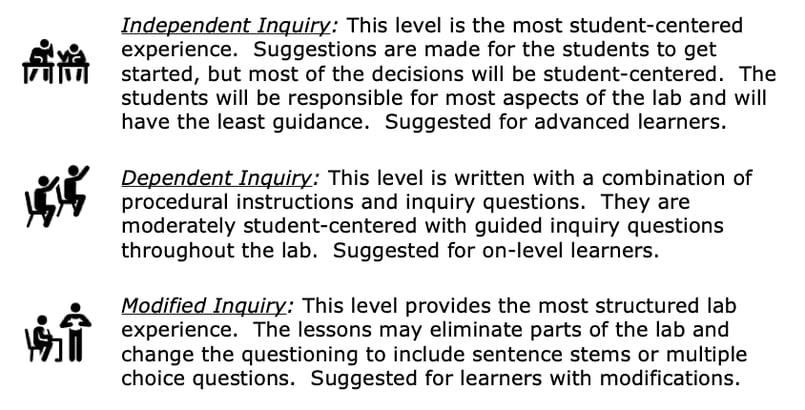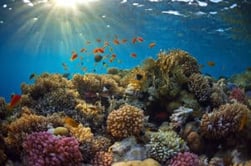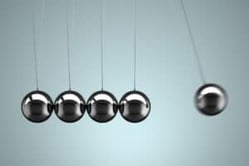Organic Compounds Inquiry Lab
Middle School Inquiry Lab on Organic Compounds
In this lab students will model various compounds using the chemical and structural formulas. They will learn how to identify compounds as organic or inorganic. They can research the names of the compounds on the internet or teacher can provide them with a list.
Each inquiry lab will contain an essential question that will drive the lesson and make students think. For this lesson, the essential question is:
- How do you recognize organic compounds in a chemical formula? What other elements are found in organic compounds?
BACKGROUND INFORMATION AND MATERIALS LIST:
Students will begin the lab by reading the essential question and background information. This can be done individually, as lab groups, or as a whole class. If you consider lab groups, you also might include some type of whole class formative checks before digging into the lab.

Materials List:
- colored pony beads:
- 16 white
- 5 black
- 9 red
- 2 purple
- 2 orange
- 1 yellow
- 15 pipe cleaners (cut in half to make 30 pieces)
PROCEDURE:
In this lab, students will be creating model structure of compounds. Using pony beads, pipe cleaners, and a guide, students will create structural formulas of five different compounds. This will give students a visual and tactile advantage to explain which compounds are classified as organic or non-organic.
CHECK FOR UNDERSTANDING:
At this point in the lab, students will be checked for understanding by answering questions about their findings. Here is one that comes with the lab:
- What is the difference between a chemical formula and a structural formula?
CONCLUSION
Students will go back to the essential question and write a CER (Claim, Evidence, Reasoning) to conclude the lab. Once completed, students will reflect back on their learning by answering the following questions:
- What is the study of organic compounds?
- What other elements are often found in organic compounds?
- Where are carbon-based compounds found?
MODIFIED AND INDEPENDENT INQUIRY VERSIONS
All of the Kesler Science inquiry labs come with three different modification levels. Each lab is differentiated using the icons below.
STANDARDS ALIGNMENT
TEKS: 7.13C – Identify that organic compounds contain carbon and other elements such as hydrogen, oxygen, phosphorus, nitrogen, or sulfur.

Download Over $100 in FREE Resources
For Middle School Science
Simply create a login below and gain immediate access to a selection of our Kesler Science product line worth $100 - for FREE. There's a full version of every product type! You'll also join tens of thousands of middle school science teachers who receive timely tips and strategies straight to their inbox.






